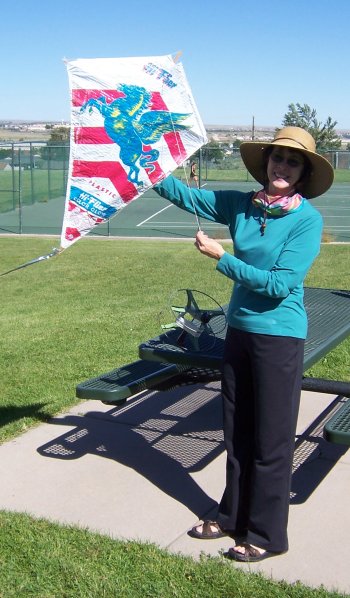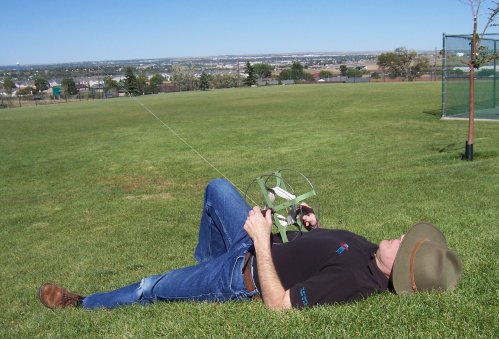 Yesterday afternoon, Carol and I went down to the schoolyard near Safeway, and we did something I keep telling people not to do: We flew a vintage kite. It was an experiment to see if my advice was always good, or if there might be exceptions.
Yesterday afternoon, Carol and I went down to the schoolyard near Safeway, and we did something I keep telling people not to do: We flew a vintage kite. It was an experiment to see if my advice was always good, or if there might be exceptions.
The advice came out of three separate experiences I’ve had in the last ten years, attempting to fly vintage kites. In each case, the kite didn’t survive even five minutes in the air. In one case, the paper sail more or less disintegrated, and in retrospect I should have seen that one coming. Mercifully, it wasn’t an especially valuable kite, and it was in lousy shape.
 In the other two cases, it was the sticks that went. Both times, wind pressure against the kite caused the bow stick to snap at the vertical spar. In neither case was the breeze hurricanic, or even particularly fresh. The lesson? Thin sticks of cheap pine dry out over forty or fifty years and get very brittle.
In the other two cases, it was the sticks that went. Both times, wind pressure against the kite caused the bow stick to snap at the vertical spar. In neither case was the breeze hurricanic, or even particularly fresh. The lesson? Thin sticks of cheap pine dry out over forty or fifty years and get very brittle.
In this case, the kite in question was present in a lot of ten kites I bought at auction. It’s a 36″ Hi-Flier “Pegasus” plastic kite from the mid-1970s. Its sticks were already cracked, and I simply replaced them with new wood of similar size bought at Hobby Lobby and cut to the same length. The plastic sail had remained wrapped tightly around the sticks in an (evidently) very warm place since 1975, with the expected crinkles and bleedover of the paint on the plastic. So it wasn’t a great kite to begin with, and probably the worst in the lot of ten. If I lost it, I wouldn’t cry. (Too hard, at least.)
The wind was a little stiff for this kind of kite; probably 15 MPH. In a 6-8 MPH breeze they often fly well without a tail at all, but I gave it about seven feet of tassel-tail made out of kite-paper rectangles pinched in the middle and taped to a mylar ribbon. And well that I did: It went a little wild with about 100 feet of string out, which is all I wanted to give it. Any more, and it would have been out over Highway 115 or (worse) Fort Carson. There was plenty of leaning and looping and a couple of outright nose-down crashes into the grass, but nothing broke and nothing tore.
The mark of a truly successful flight is being able to lie on your back on the hillside, and after the wind shifted to the north a little and banked down to about 10 MPH, things got satisfyingly snoozy and I declared the outing a total success. Reeled the kite in and took it home, and I may in fact dare to fly it again at some point. So the advice against flying old kites is generally true if the old kites are really old, and all original equipment. Replace the sticks with new pine, and if the sail isn’t already crumbling to dust, well, you’ve got a chance. Tree problems, heh: That’s up to you.











